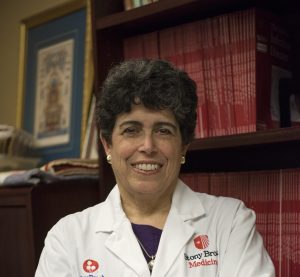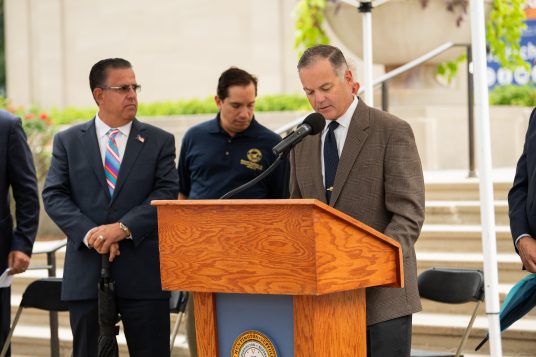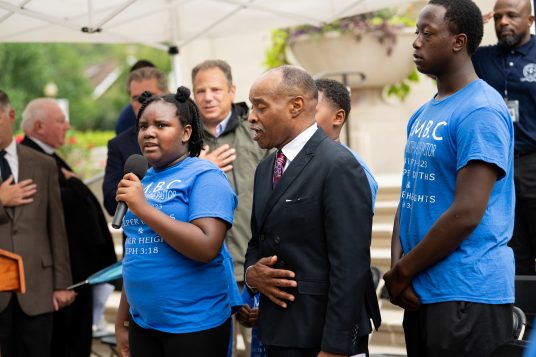The public university that could, Stony Brook University, which is considerably younger than many of the schools with greater prestige, climbed 19 spots in the latest US News and World Report ranking of schools to 58.
At the highest ever rank for a State University of New York institution, SBU also placed 12th among national universities for social mobility rank.
“Stony Brook takes tremendous pride in its role as a New York flagship institution, and these latest rankings offer yet another proof point that this university is a destination of choice for students from all backgrounds looking to reach and exceed their boldest ambitions,” said Stony Brook University President Maurie McInnis. “While these rankings represent an opportunity to celebrate Stony Brook’s promising trajectory as the top public university in New York state, the focused commitment to our mission continues to guide our path forward.”
Stony Brook’s climb up the rankings is neither a one-year wonder nor a sudden recognition of the breadth and depth of its programs and the commitment of its staff to students from a wide range of backgrounds.
Stony Brook ranked in the 93 in 2022.
“While this jump is much bigger, you feel more confident when it’s part of a trend,” said Carl Lejuez, executive vice president and provost, in an interview. “This is a trajectory that has been led by the president’s vision for what it means for the state of New York to have a premier public institution.”
Lejuez added that SBU benefited from a change in the way US News and World Report compiles its rankings. At the same time that alumni giving, where Stony Brook doesn’t do as well, was taken out of the rankings, the periodical increased its emphasis on the graduation of Pell-eligible students.
Considered among the most economically challenged students at Stony Brook, Pell-eligible undergraduates achieved an 80% graduation rate.
“Other schools have a huge disparity” for the graduation rates of Pell-eligible students, Lejuez said. “We’ve really leaned into who we are” particularly for students who can improve their social mobility through a quality and well-respected education.
“We do believe those changed metrics make the rankings better,” Bill Warren, vice president for marketing and communications, said in an interview. “It’s not happenstance that we rose — we are being recognized for many of the things we do so very well.”
Specifically, Warren said the university admits and supports a diverse student population that has excellent graduation rates, reflecting the level of academic and other types of support the school offers to ensure the college experience meets and “hopefully exceeds” their expectations and needs.
More applicants
The climb in the rankings has helped drive up applications and made 2023 the largest incoming first year class in the school’s history.
In 2023, applications surged 24.2% for all Stony Brook application submissions to 55,633. The freshman rate, which comprised the vast majority of those applications, increased 23.9% to 50,435.
The faculty, meanwhile, applauded the recognition and the higher ranking.
“Without question, this is great news for Stony Brook University and long overdue,” Clinton Rubin, SUNY distinguished professor in the Department of Biomedical Engineering, wrote in an email. The senior administration is “committed to building on strengths, and research and technology development across all disciplines is thriving. The impact the university has had on upward mobility is inspiring, and the faculty, staff and students are proud to be part of such a key resource for the global community.”
Stony Brook has “come a long way and has much more to contribute,” Rubin added.
Peter van Nieuwenhuizen, distinguished professor emeritus in the Department of Physics and Astronomy, has noticed a “happiness” at the university: “I believe we are in fact better even than these rankings say,” he said in an interview.
Van Nieuwenhuizen said that 14 of his 17 former Ph.D. students have become professors elsewhere, which shows how other institutions value the students who earn degrees at Stony Brook University.
In addition to the higher ranking from US News and World Report, Stony Brook has also had some high-profile academic and financial victories recently.
Stony Brook was named the anchor institution to build a Climate Exchange Center on Governors Island that is dedicated to research and education and sharing information about the impacts of global warming on the world. [See story, “SBU will develop $700M climate center on Governors Island,” April 26, TBR News Media].
In addition, the Simons Foundation, founded by former math chair and founder and CEO of Renaissance Technologies and his wife Marilyn, announced a $500 million gift to the university, which was the largest ever unrestricted endowment gift to an institution of higher learning. [See story, “Simons Foundation gives record $500M gift to Stony Brook University,” June 2, TBR News Media].
Further opportunities
Lejuez sees continued opportunities for the university. He said international enrollment has not returned to the pre-pandemic levels.
Comparing Stony Brook to where the school’s peers are in terms of out-of-state and international students, the university is “not where we want to be in both of those areas.”
SBU is developing strategies that Lejuez anticipates will pay off within two years.
“You never want to bring in international and domestic out-of-state students at the expense of students in the state,” but having the right mix of students from different backgrounds and experiences “creates a vibrant university,” he said.
Lejuez has been to South Korea twice and China once in the past six months and has emphasized the quality of the programs and the safety of the campus.
Stony Brook is also enhancing the level of its advisory services for students.
“We invested a lot this summer in advising,” Lejuez said, which is an area where “we were lagging behind other universities. Students and parents are going to see a lot of focus in advising and tutoring” which help ensure student success.









































